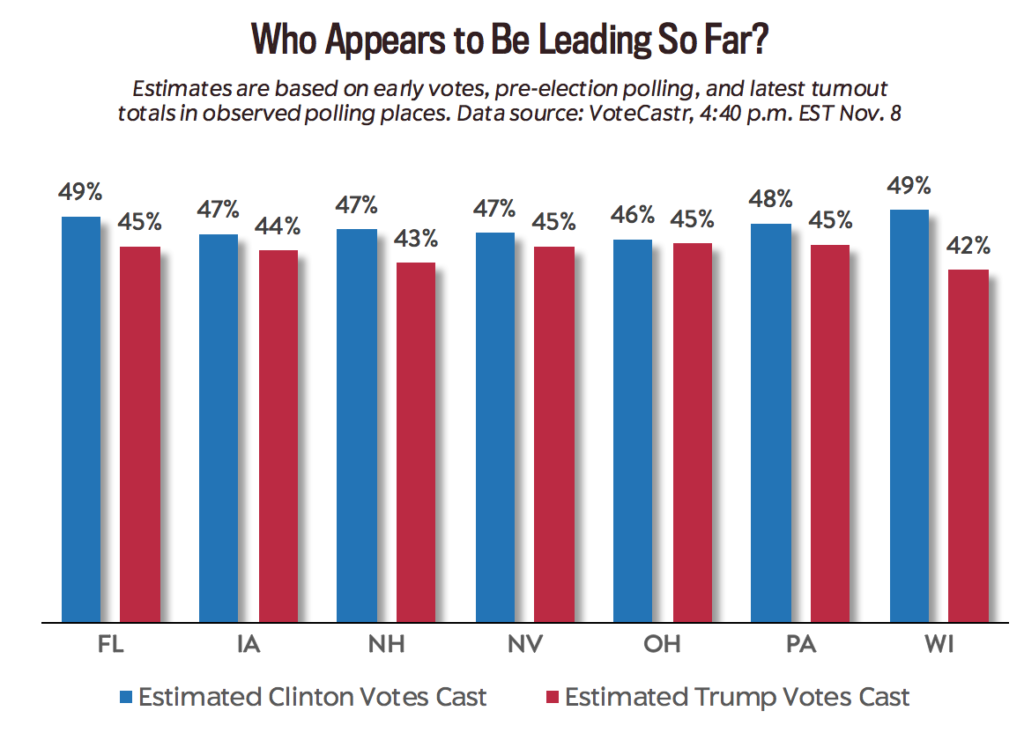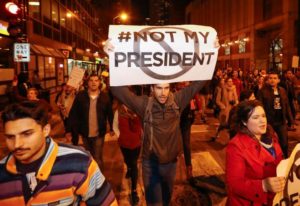Slate breaks the traditional information embargo on election coverage with estimated results throughout the day.
By WhyskyJack, a Trail Mix Contributor
 It is why the Cubbies are no longer the lovable losers and why my Royals won last year.
It is why the Cubbies are no longer the lovable losers and why my Royals won last year.
It is at the heart of the Clinton campaign decision making.
And in a controversial move Slate is going to use it to give us real time estimates on who is winning throughout the day.
From Slate:
Here’s a longer description of how this whole thing works. The project can be broken down into two phases: what happens before Tuesday, and what happens on the day itself. In the lead-up to Election Day, VoteCastr conducted large-sample surveys in eight battleground states. Unlike a typical media poll that might ask hundreds of respondents dozens of questions, these surveys presented thousands of people with just a handful of queries each. The results were then run through predictive models to determine the probabilities of each voter in each of the eight states casting a ballot for Clinton, Trump, Gary Johnson, or Jill Stein. (VoteCastr did not include Evan McMullin in its models. The independent candidate is only on the ballot in two states we are tracking, Colorado and Iowa.)
The other piece of the pre–Election Day puzzle is early voting, which now accounts for an estimated 30 to 40 percent of the general election vote. Local officials collect and report information about who voted early in each state in advance of the election, and VoteCastr then compares that public info with its own private voter files. To understand how this works in practice, consider my early ballot, which I cast in Iowa City last week. Though VoteCastr doesn’t know who I voted for, it can make an educated guess based on the things it does know about me: my age, race, and party registration. Our friends at VoteCastr tell me the model believes there’s a 97 percent chance I voted for Clinton. When my name shows up on the list of people who voted early in the Hawkeye State, VoteCastr will use that number to fill in the blank. These voter preference estimates allow VoteCastr to make more specific forecasts about the early voting split than most other modelers, which simply sort returned ballots by party registration.
Slate is taking a lot of criticism for doing this while the polls are still open, but if they go ahead with it and it works (a risk in itself) then the flood gates are open.
Is it good? Is it bad?
Eh, I don’t know but I really don’t see how anyone can stop it.
Slate’s Votecastr page:
slate.com/votecastr
More Posts by WhskyJack
VoteCastr Estimates (4:40pm ET)




